Separation anxiety is a common issue that many dog owners face, causing their beloved pets to experience stress and discomfort when left alone.
This anxiety can lead to destructive behaviors and excessive barking, which is not only distressing for the dog but also for the owner.
A potential solution to handling separation anxiety in dogs is crate training, but is it the right choice for you and your furry friend?
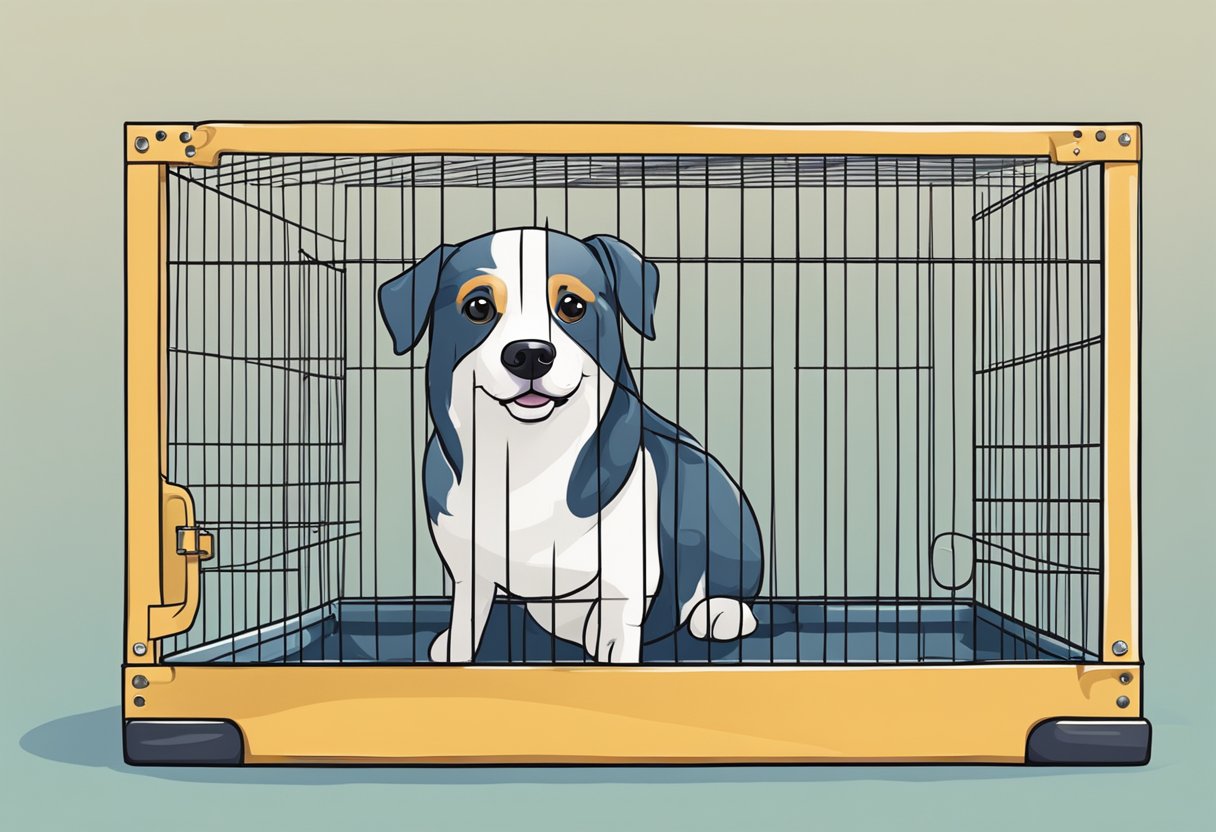
Crate training, when executed correctly, can provide a secure and comfortable space for your dog to retreat to when you’re not around.
It’s important to approach crate training with a focus on creating a positive association with the crate for your dog, ensuring they view it as a safe haven rather than a punishment.
However, crate training is not a one-size-fits-all solution, and some dogs with severe separation anxiety might require additional support or alternative methods.
Understanding Separation Anxiety in Dogs
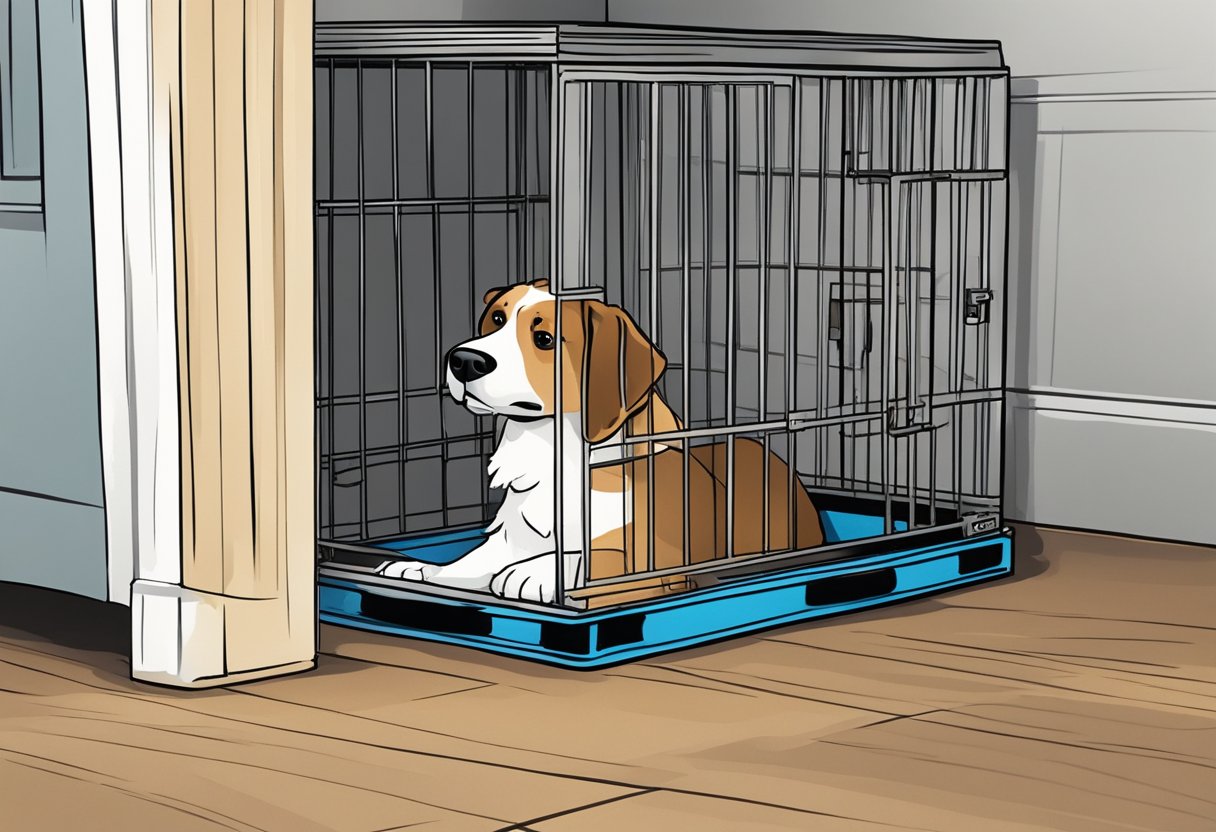
Separation anxiety in dogs is a common issue that many pet owners face.
It occurs when your dog becomes stressed and displays signs of panic or distress when left alone or separated from their favorite human.
This anxiety can manifest through several behaviors like excessive barking, whining, pacing, and even destructive actions like destroying furniture or chewing on objects.
There are a few telltale signs that your dog might be dealing with separation anxiety.
If your dog is prone to barking, howling, or crying excessively when you’re not around, this can be an indication of anxious feelings.
Additionally, dogs with separation anxiety might also exhibit destructive behaviors, such as chewing on furniture or door frames, or leaving a mess in the house.
Pacing and panting are also common indicators that your beloved pet is feeling stressed and agitated in your absence.
When dealing with separation anxiety in dogs, it’s important to distinguish it from boredom or general misbehavior.
While both separation anxiety and boredom can cause destructive behaviors, anxiety-related actions tend to be more frantic and persistent.
On the other hand, boredom-induced behaviors might be more about seeking attention or just to pass the time.
To manage and control your dog’s anxiety, there are several strategies you can try, such as crate training.
Crate training involves teaching your dog to view their crate as a safe, comfortable space where they can relax.
This can help your dog feel secure when they’re alone and may reduce their feelings of panic and stress.
Role of Crate Training in Managing Separation Anxiety
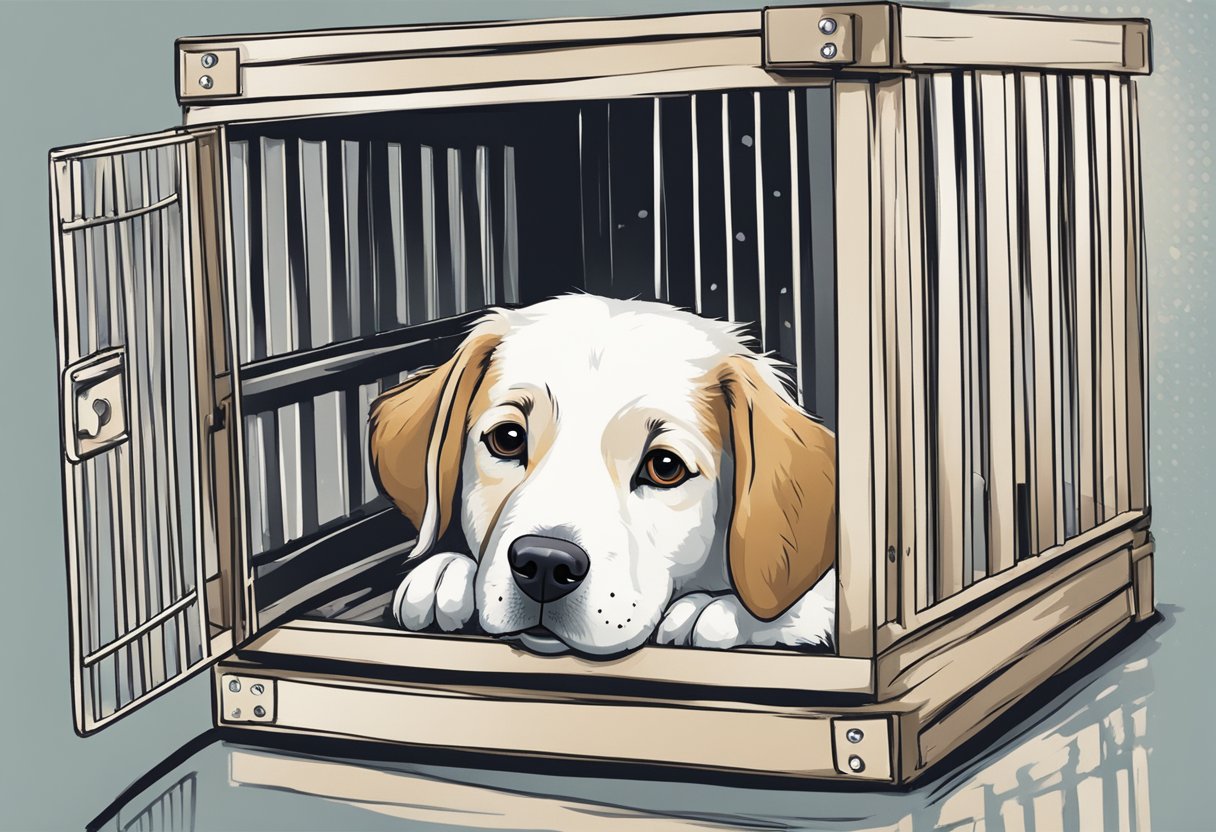
Crate training can play a significant role in managing your dog’s separation anxiety.
By providing a safe and comfortable space for your dog, crate training helps create a secure environment where they feel at ease when you’re not around.
When done correctly, crate training gradually teaches your dog to stay in their crate or kennel when left alone.
The key here is to make it a positive experience for your furry friend, using rewards and praise to reinforce good behavior.
Introduce the crate gradually, allowing your dog to familiarize itself with the space and develop positive associations with it.
Dogs with separation anxiety can benefit from having a “quiet place” to escape to.
By offering them a crate as their personal sanctuary, you can help reduce stress and anxiety when they can’t be with you.
Crating also allows you to secure your dog, preventing them from wandering around the house and potentially causing damage or harm to themselves in their anxiety-driven state.
Another benefit of crate training for dogs with separation anxiety is that it can help curb destructive behavior.
In many cases, dogs with separation anxiety will act out and cause damage to their surroundings when left alone.
By providing a secure space for them to relax in, destructive behaviors are less likely to occur.
However, it’s important to note that crate training should never be used as a punishment or to isolate your dog for extended periods.
Doing so will only reinforce their negative feelings associated with being alone and can worsen their separation anxiety.
Incorporating Crate Training into Dog’s Routine
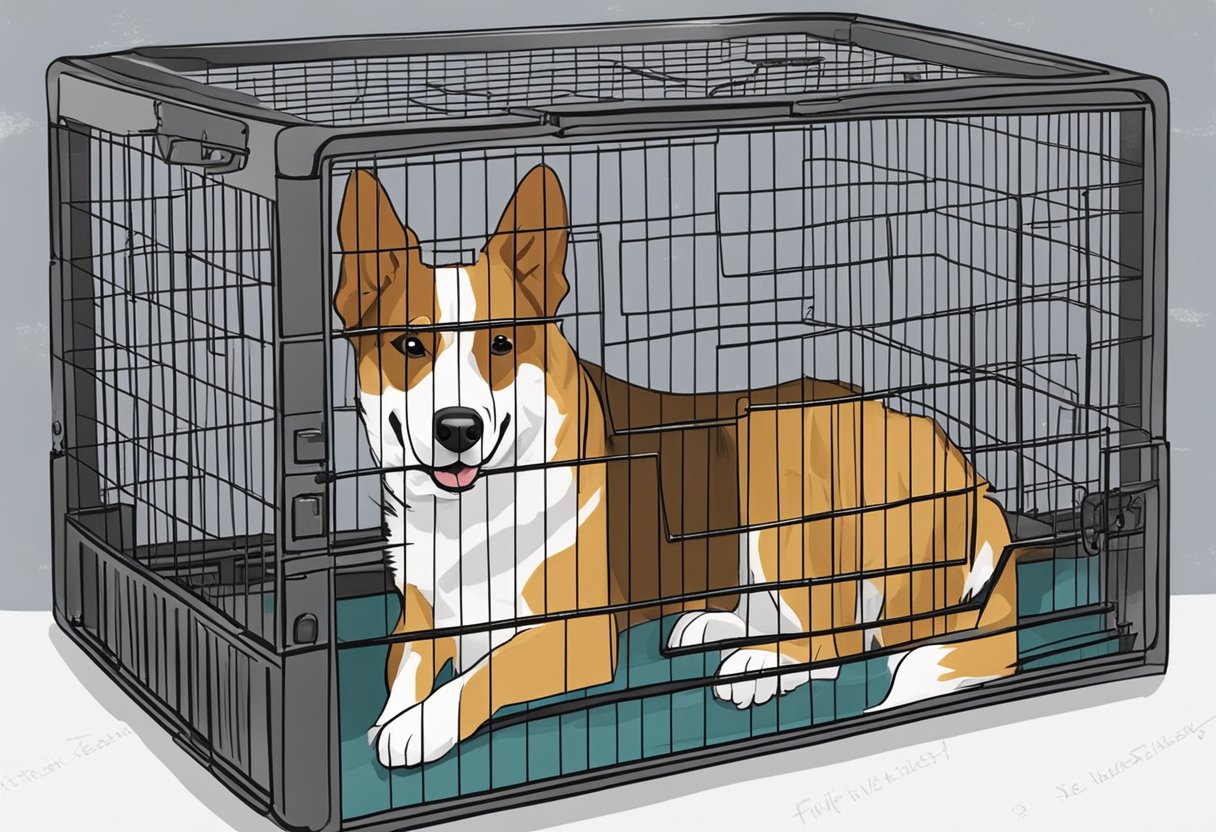
Creating a positive crate training experience is crucial, especially when dealing with separation anxiety.
Start by getting a crate that’s the right size for your dog, allowing them enough room to comfortably stand, sit, and lie down.
Introduce your dog to their new crate by placing it in a designated area of your home.
Make it inviting by adding a cozy blanket, their favorite toys, and a few tasty treats.
Encourage your dog to explore the crate on their own, rewarding them with praise and more treats when they enter it voluntarily.
Consistency is key to successful crate training. Establish a routine for meal times, exercise, and breaks to help your dog form healthy habits.
Provide your dog with scheduled meals and exercise daily. This routine will give them a sense of stability and can help alleviate separation anxiety.
When you’re away from home, use the crate as your dog’s safe space.
Start by leaving them for short periods, gradually increasing the time.
Be careful not to make a fuss when you leave or return, so your dog doesn’t associate the crate with your absence.
If your dog has an accident in the crate during the initial training phase, calmly clean it up without discipline to avoid creating negative experiences.
To build a positive association with the crate, make sure to reward your dog with a treat or praise every time they use it successfully, even when they’re just relaxing inside.
The more your dog associates the crate with positive experiences, the easier it will be to manage separation anxiety.
Additional Support for Dogs with Separation Anxiety

Besides crate training, there are other methods that can help your dog cope with separation anxiety.
Providing additional support can help make the process smoother and more effective.
Keep Departures and Arrivals Low-Key: By not making a big fuss when you leave or return home, you can help ease your dog’s anxiety. Offering excessive attention before leaving or right after arriving may increase their stress.
Gradual Exposure to Alone Time: Start by leaving your dog in a separate room for short periods, gradually increasing the time they spend alone. This desensitization process helps to build up their tolerance to being alone without causing panic.
Physical and Mental Stimulation: Ensure your dog gets enough exercise and mental stimulation through daily walks, playtime, and puzzle toys. This helps tire them out and keeps their mind occupied, making alone time more tolerable.
Praise and Treats: To reward your dog’s calm behavior when you’re away, consider using treat-dispensing toys or leaving special treats for them. Praising your dog when they’re relaxed can help reinforce the idea that being alone is okay.
Seek Professional Help: If your dog’s separation anxiety is severe, consult your veterinarian or a professional trainer. Dog behaviorists can recommend customized training techniques and determine if medication might be necessary.
Frequently Asked Questions
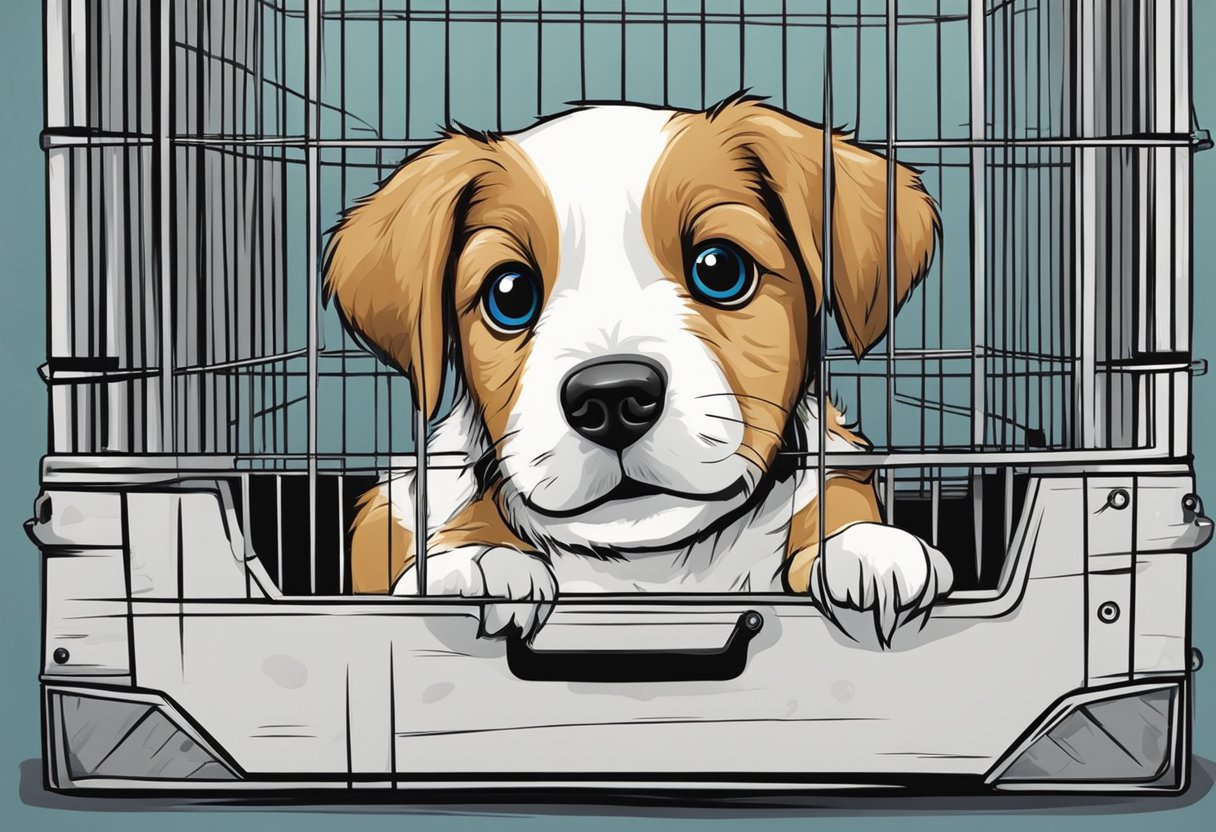
Does crate training help alleviate separation anxiety in dogs?
Yes, crate training can help alleviate separation anxiety in dogs by providing them a safe and comfortable space when you’re not around.
It makes them feel secure and enclosed, which can minimize their stress and anxiety.
How can crate training be effective in handling a dog’s separation anxiety?
Crate training can be effective in handling a dog’s separation anxiety by following these steps:
- Introduce the crate gradually, using rewards and praise.
- Make the crate comfortable with a soft bed, a blanket with your scent, and some toys.
- Feed your pup meals close to their crate, and eventually inside it.
- Practice leaving your dog in the crate for short periods while you’re home, and gradually increase the duration.
Remember, don’t use crate training as punishment and always keep the experience positive for your dog.
Can crate training alone cure separation anxiety in dogs?
Crate training can be helpful in managing separation anxiety symptoms, but it may not entirely cure the issue.
Each dog is different, and consultation with a veterinarian or a certified dog behaviorist is advisable for creating a complete, tailored plan to address separation anxiety.
How does a crate cover impact a dog’s separation anxiety?
A crate cover can help in reducing a dog’s separation anxiety by creating a more secluded and darker environment.
It can make the crate feel like a den and provide your dog with a sense of security.
However, make sure your dog is comfortable with the cover and monitor their reactions, as it might not be suitable for all dogs.
Are there specific techniques for crate training puppies to prevent future separation anxiety?
To prevent future separation anxiety, it’s essential to start crate training puppies early on. Some tips include:
- Use positive reinforcement and rewards while introducing the crate.
- Establish a consistent routine for entering and leaving the crate.
- Avoid making a big fuss when leaving or returning to avoid creating anxiety triggers.
- Gradually increase the time your puppy spends in the crate, ensuring they remain comfortable and relaxed.
By doing so, you’re encouraging a positive association with the crate and teaching your pup to be more independent, reducing the risk of developing separation anxiety in the future.
